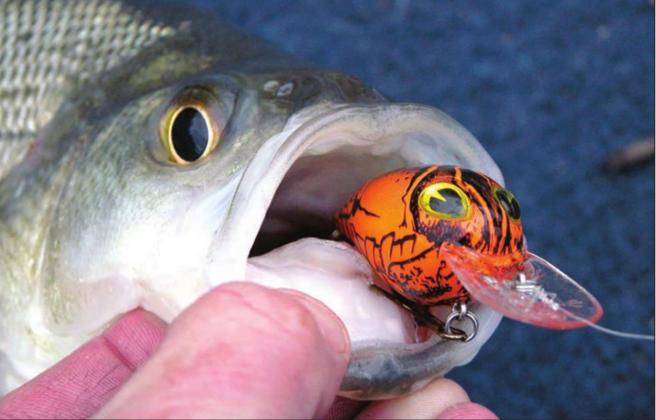White Bass Countdown
It’s just about game time on select river systems across Texas, and things are setting up for some serious fishing fun over the next few months.
White bass spawning run is an annual event that rolls around each winter and early spring on major rivers and other waterways that feed large reservoirs with abundant populations of the prolific sport fish.
It’s a hallowed affair that signals the beginning of another fishing season and a great opportunity for thousands of recreational anglers to enjoy some of the fastest action of the year.
TIMING THE SPAWN
The timing of the spawning run is regional thing that can vary from one waterway to the next.
In Central and North Texas, the Colorado, Guadalupe, Brazos and Trinity river drainages see significant spawning runs, usually getting underway in February or March and sometimes lasting into April.
East Texas hotspots like the Sabine, Trinity, Angelina and Neches usually fall somewhere in the middle, though earlier activity sometimes occurs during abnormally warm years with favorable river flows. Notable spawning runs also have been documented in creeks and drainages that feed lakes like Cedar Creek, Tawakoni, Cooper, Conroe and Wright-Patman.
One thing that sets East Texas rivers aside from others is the size of the fish. A 1 1/2-pounder is a big sand bass on many Texas rivers but closer to average in nutrient-rich waters like the Sabine, Trinity and Angelina. Females weighing around 2 pounds are the norm on those waters; fish weighing upwards of 3 pounds are not uncommon.
The Sabine and Neches watersheds recently got some badly needed rain to spur some current and raise water levels. Meanwhile, the Angelina and Trinity are in good shape and awaiting Mother Nature’s call to flip the switch that sends bevies of fish parading upstream from Sam Rayburn and Livingston reservoirs.
THE MAIN EVENT
River fishing can be outstanding when the spawning run is going full bore. The bite is usually best when the current is slow and steady, clarity is good and the water level is fairly close to normal. Normal water levels keep the fish confined to channels so they are easier to find.
Flood conditions mean just the opposite. When rivers breach their banks, the fish scatter and are more difficult to find. During periods of high and muddy water, sandies will may seek out clearer, less turbulent areas found in creeks and sloughs adjacent to the main channel.
With swarms of hungry, aggressive fish stacked in small areas, the fishing can be fast and furious at times for those who locate the sweet spots. In fact, it’s not uncommon for multiple anglers to reel in 25 fish limits in as many casts from spots no larger than a pickup bed.
It typically doesn’t take much skill to score, and you may not need a boat to catch fish provided bank access is sufficient for firing baits to productive waters.
BAITS FOR THE FUN OF IT
White bass are voracious feeders when the dinner bells rings. Few artificial baits fool them better than shad or crawfish imitations.
A long-time staple is 1/4 ounce Blakemore Roadrunner, red/white or red/ chartreuse. They also like small crankbaits or live bait including minnows or crayfish.
Just about any lightweight rod and reel combo will work. A good quality spinning or spin cast outfit matched with light line doubles the pleasure.


